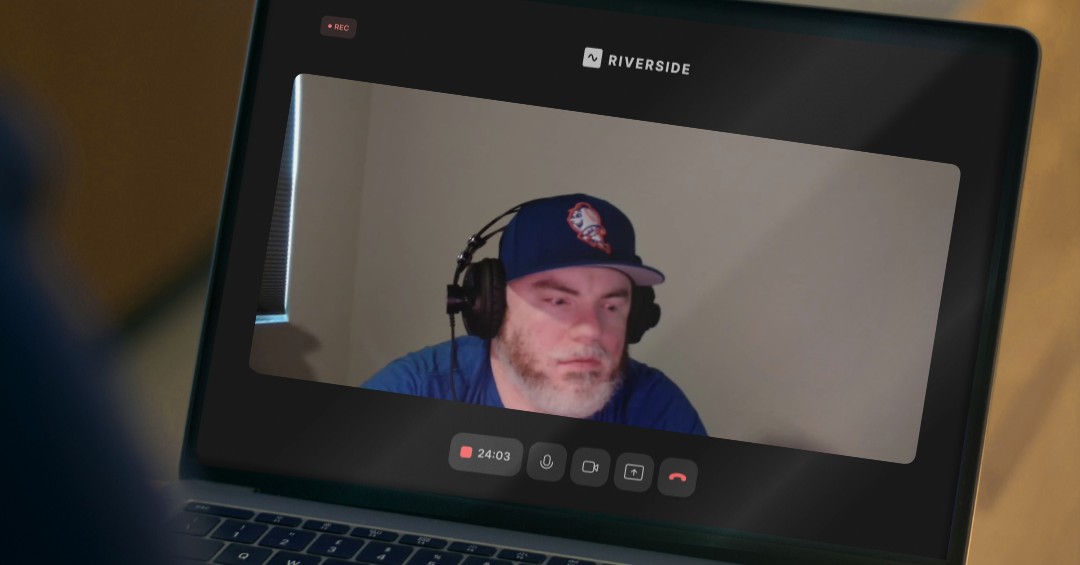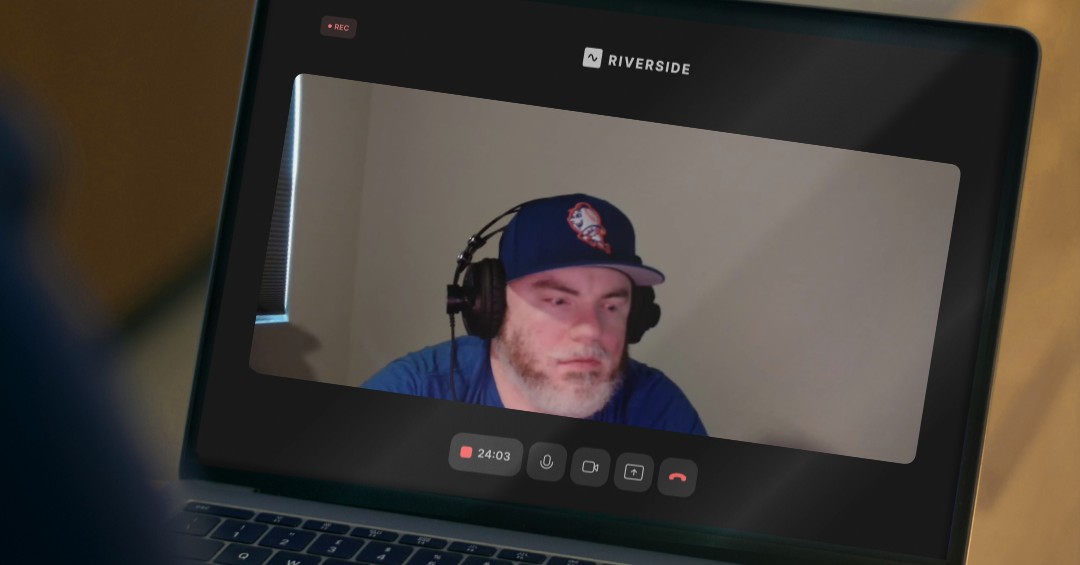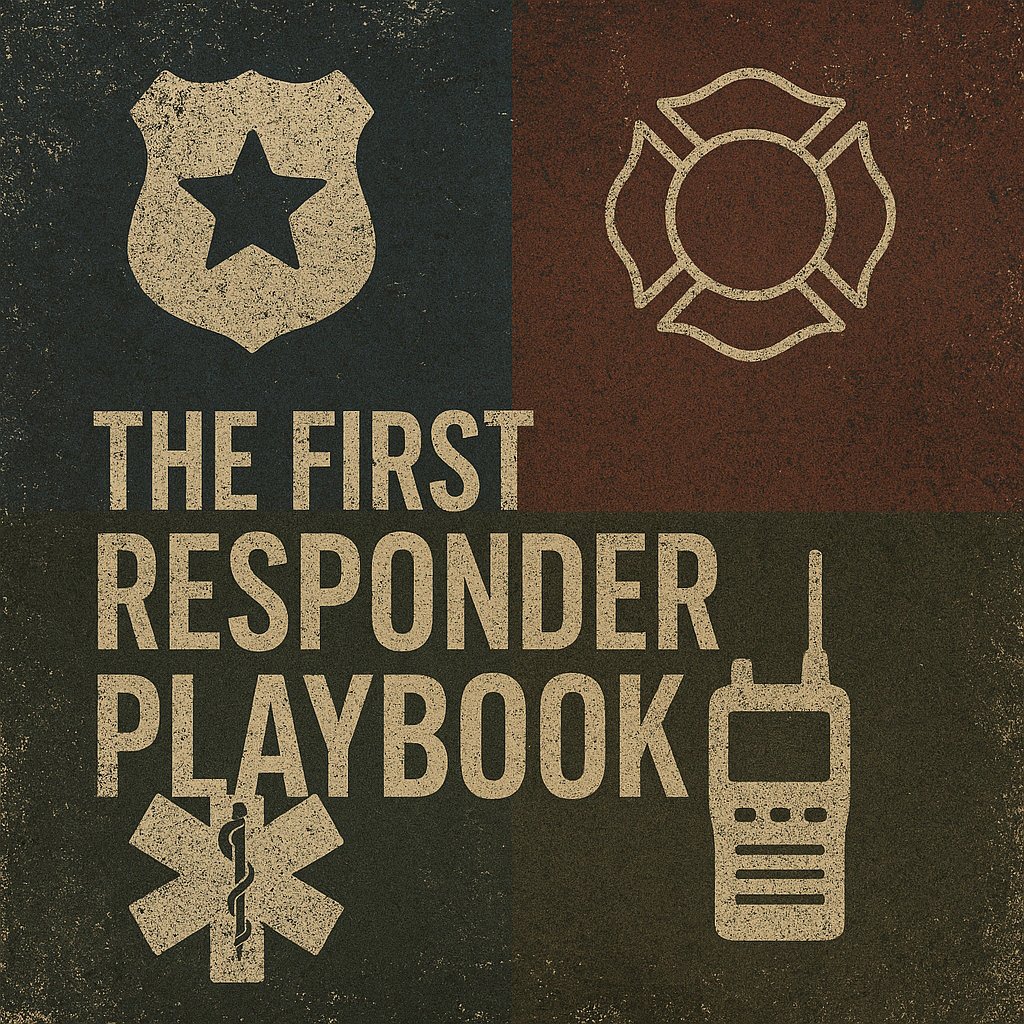

The Making of a Marine: Challenges, Triumphs, and Lifelong Friendships Part 1
The First Responder Playbook: Insights on Leadership and Training
| Brent Colbert | Rating 0 (0) (0) |
| Launched: May 10, 2025 | |
| bcolbert1629@gmail.com | Season: 1 Episode: 4 |
The Making of a Marine: Challenges, Triumphs, and Lifelong Friendships Part 1
The First Responder Playbook: Insights on Leadership and Training
Published: May 10, 2025, Season: 1, Episode: 4
Artist: Brent Colbert
Episode Summary
Here’s a comprehensive sequence of topics covered in the episode, with sub-topics for each main subject:
1. Introduction and Background of the Guest
-
Travis Mitchell’s connection to Wagner and background
-
Travis’s status as a Marine Corps veteran and lifelong association
-
The episode’s focus on military life and transitions
2. Decision to Join the Marine Corps
-
Influence of cousin Michael and early impressions
-
Discovery of aviation roles within the Marines
-
Impact of 9/11 on motivation to enlist
-
Role of community and patriotism in small towns
-
Decision-making process: considering other branches, perception of Marine Corps challenge and discipline
3. Marine Corps Boot Camp Experience
-
Location and first experiences flying and traveling (San Diego, MCRD)
-
Initial reception by drill instructors
-
Transfer and confusion on arrival
-
Environment shaped by Vietnam veteran Marines and tough discipline
4. Details of Boot Camp
-
Length and intensity (thirteen weeks, physical and mental challenges)
-
Comparisons to other military branches’ boot camps
-
Transition rules for changing branches
5. Civilian to Military Transition
-
Adjusting to the “90 to nothing” Marine Corps pace
-
Handling physical and disciplinary demands
-
Breaking down and rebuilding habits
6. The Crucible and Marine Corps Traditions
-
Structure and challenge of “the Crucible”
-
Timeline within boot camp (up north to Camp Pendleton, rifle week, medical training)
-
Mental and physical exhaustion
-
Pride and motivation from drill instructors
-
The tradition of the Eagle, Globe, and Anchor ceremony
-
Rituals and transition to being called a Marine
7. Post-Boot Camp Training
-
Marine Combat Training (MCT), distinction between grunts and non-grunts
-
Basic skills: land navigation, rifle training, hikes
-
Importance and memory of simple rewards (like fruit after hikes)
8. Military Occupational Specialty (MOS) Training
-
Advanced training for CH-46 mechanics (the “frog” helicopter, similarities to the Chinook)
-
Reflections on aircraft phases and updates in Marine Corps aviation
-
Building close friendships (Paxton, best man story)
9. Deployments and Service Abroad
-
Assignment to North Carolina and deployment timeline
-
Workup process before deployment
-
First deployment to Iraq: Fallujah context, combat environment, differences in early and later war periods
-
Second deployment to Iraq: growth of infrastructure (PX, coffee shops), changing conditions
-
Transition to working with MV-22 Osprey (“B 22s”/V-22s)
10. Experiences in Iraq
-
Differences observed across multiple deployments
-
Involvement in nation-building and working with local forces
-
Evolving levels of danger and infrastructure development
11. Experiences Aboard Navy Ships
-
Port call in Jordan and mortar attack on U.S. vessel
-
Combat action ribbon awarded to Navy personnel
-
Impact on crew and memory of friends involved
-
Quick news coverage and the sudden departure from danger zones
12. Encounters with Piracy
-
Somali Pirate attack on their ship, response procedures
-
Multilingual warnings, deployment of defensive measures (SeaWiz, Marine snipers)
-
Capture and medical treatment of pirates
-
Ethics and complexity in dealing with wartime enemies (treatment of prisoners, Geneva Convention)
-
Transfer of pirates to the brig and repatriation to America
13. Operational Application and Reflection
-
“Gator circle” deployments (patrol and presence operations)
-
Context of Somalia and regional instability
-
Historical perspective on the U.S. involvement in the area (reference to Black Hawk Down)
-
Challenges in conducting operations due to adversaries' tactics (use of civilians as shields)
-
Targeted operations and the pursuit of high-value individuals
Here’s a comprehensive sequence of topics covered in the episode, with sub-topics for each main subject:
1. Introduction and Background of the Guest
-
Travis Mitchell’s connection to Wagner and background
-
Travis’s status as a Marine Corps veteran and lifelong association
-
The episode’s focus on military life and transitions
2. Decision to Join the Marine Corps
-
Influence of cousin Michael and early impressions
-
Discovery of aviation roles within the Marines
-
Impact of 9/11 on motivation to enlist
-
Role of community and patriotism in small towns
-
Decision-making process: considering other branches, perception of Marine Corps challenge and discipline
3. Marine Corps Boot Camp Experience
-
Location and first experiences flying and traveling (San Diego, MCRD)
-
Initial reception by drill instructors
-
Transfer and confusion on arrival
-
Environment shaped by Vietnam veteran Marines and tough discipline
4. Details of Boot Camp
-
Length and intensity (thirteen weeks, physical and mental challenges)
-
Comparisons to other military branches’ boot camps
-
Transition rules for changing branches
5. Civilian to Military Transition
-
Adjusting to the “90 to nothing” Marine Corps pace
-
Handling physical and disciplinary demands
-
Breaking down and rebuilding habits
6. The Crucible and Marine Corps Traditions
-
Structure and challenge of “the Crucible”
-
Timeline within boot camp (up north to Camp Pendleton, rifle week, medical training)
-
Mental and physical exhaustion
-
Pride and motivation from drill instructors
-
The tradition of the Eagle, Globe, and Anchor ceremony
-
Rituals and transition to being called a Marine
7. Post-Boot Camp Training
-
Marine Combat Training (MCT), distinction between grunts and non-grunts
-
Basic skills: land navigation, rifle training, hikes
-
Importance and memory of simple rewards (like fruit after hikes)
8. Military Occupational Specialty (MOS) Training
-
Advanced training for CH-46 mechanics (the “frog” helicopter, similarities to the Chinook)
-
Reflections on aircraft phases and updates in Marine Corps aviation
-
Building close friendships (Paxton, best man story)
9. Deployments and Service Abroad
-
Assignment to North Carolina and deployment timeline
-
Workup process before deployment
-
First deployment to Iraq: Fallujah context, combat environment, differences in early and later war periods
-
Second deployment to Iraq: growth of infrastructure (PX, coffee shops), changing conditions
-
Transition to working with MV-22 Osprey (“B 22s”/V-22s)
10. Experiences in Iraq
-
Differences observed across multiple deployments
-
Involvement in nation-building and working with local forces
-
Evolving levels of danger and infrastructure development
11. Experiences Aboard Navy Ships
-
Port call in Jordan and mortar attack on U.S. vessel
-
Combat action ribbon awarded to Navy personnel
-
Impact on crew and memory of friends involved
-
Quick news coverage and the sudden departure from danger zones
12. Encounters with Piracy
-
Somali Pirate attack on their ship, response procedures
-
Multilingual warnings, deployment of defensive measures (SeaWiz, Marine snipers)
-
Capture and medical treatment of pirates
-
Ethics and complexity in dealing with wartime enemies (treatment of prisoners, Geneva Convention)
-
Transfer of pirates to the brig and repatriation to America
13. Operational Application and Reflection
-
“Gator circle” deployments (patrol and presence operations)
-
Context of Somalia and regional instability
-
Historical perspective on the U.S. involvement in the area (reference to Black Hawk Down)
-
Challenges in conducting operations due to adversaries' tactics (use of civilians as shields)
-
Targeted operations and the pursuit of high-value individuals
Here’s a comprehensive sequence of topics covered in the episode, with sub-topics for each main subject:
1. Introduction and Background of the Guest
-
Travis Mitchell’s connection to Wagner and background
-
Travis’s status as a Marine Corps veteran and lifelong association
-
The episode’s focus on military life and transitions
2. Decision to Join the Marine Corps
-
Influence of cousin Michael and early impressions
-
Discovery of aviation roles within the Marines
-
Impact of 9/11 on motivation to enlist
-
Role of community and patriotism in small towns
-
Decision-making process: considering other branches, perception of Marine Corps challenge and discipline
3. Marine Corps Boot Camp Experience
-
Location and first experiences flying and traveling (San Diego, MCRD)
-
Initial reception by drill instructors
-
Transfer and confusion on arrival
-
Environment shaped by Vietnam veteran Marines and tough discipline
4. Details of Boot Camp
-
Length and intensity (thirteen weeks, physical and mental challenges)
-
Comparisons to other military branches’ boot camps
-
Transition rules for changing branches
5. Civilian to Military Transition
-
Adjusting to the “90 to nothing” Marine Corps pace
-
Handling physical and disciplinary demands
-
Breaking down and rebuilding habits
6. The Crucible and Marine Corps Traditions
-
Structure and challenge of “the Crucible”
-
Timeline within boot camp (up north to Camp Pendleton, rifle week, medical training)
-
Mental and physical exhaustion
-
Pride and motivation from drill instructors
-
The tradition of the Eagle, Globe, and Anchor ceremony
-
Rituals and transition to being called a Marine
7. Post-Boot Camp Training
-
Marine Combat Training (MCT), distinction between grunts and non-grunts
-
Basic skills: land navigation, rifle training, hikes
-
Importance and memory of simple rewards (like fruit after hikes)
8. Military Occupational Specialty (MOS) Training
-
Advanced training for CH-46 mechanics (the “frog” helicopter, similarities to the Chinook)
-
Reflections on aircraft phases and updates in Marine Corps aviation
-
Building close friendships (Paxton, best man story)
9. Deployments and Service Abroad
-
Assignment to North Carolina and deployment timeline
-
Workup process before deployment
-
First deployment to Iraq: Fallujah context, combat environment, differences in early and later war periods
-
Second deployment to Iraq: growth of infrastructure (PX, coffee shops), changing conditions
-
Transition to working with MV-22 Osprey (“B 22s”/V-22s)
10. Experiences in Iraq
-
Differences observed across multiple deployments
-
Involvement in nation-building and working with local forces
-
Evolving levels of danger and infrastructure development
11. Experiences Aboard Navy Ships
-
Port call in Jordan and mortar attack on U.S. vessel
-
Combat action ribbon awarded to Navy personnel
-
Impact on crew and memory of friends involved
-
Quick news coverage and the sudden departure from danger zones
12. Encounters with Piracy
-
Somali Pirate attack on their ship, response procedures
-
Multilingual warnings, deployment of defensive measures (SeaWiz, Marine snipers)
-
Capture and medical treatment of pirates
-
Ethics and complexity in dealing with wartime enemies (treatment of prisoners, Geneva Convention)
-
Transfer of pirates to the brig and repatriation to America
13. Operational Application and Reflection
-
“Gator circle” deployments (patrol and presence operations)
-
Context of Somalia and regional instability
-
Historical perspective on the U.S. involvement in the area (reference to Black Hawk Down)
-
Challenges in conducting operations due to adversaries' tactics (use of civilians as shields)
-
Targeted operations and the pursuit of high-value individuals
Welcome back to "My Space." In this episode, Brent sits down with Travis Mitchell, a lifelong friend from Wagoner and a former Marine—though as Brent reminds us, once a Marine, always a Marine. Travis takes us through his journey from being inspired by family and neighbors, to enlisting right after 9/11, to the reality checks of boot camp in San Diego. They dig into the unique intensity of Marine Corps training, the camaraderie forged in the barracks, and why the Crucible is such a defining moment in becoming a Marine.
Travis shares vivid stories from his deployments—from the evolving landscape of Iraq and what it was really like during turbulent times in Fallujah and Mosul, to tense encounters with Somali pirates off the coast and attacks on a U.S. Navy vessel in Jordan. Along the way, we get a glimpse into the brotherhood built through shared hardship, the strange comfort of a simple orange after a brutal training hike, and the sobering realities of conflict at sea and abroad.
Join us as we step into the world of a Marine—what inspires someone to serve, how military life shapes a person, and what it feels like to carry those experiences home. Whether you’re military, family, or just curious, this conversation offers a genuine look inside the heart and mind of a first responder.





